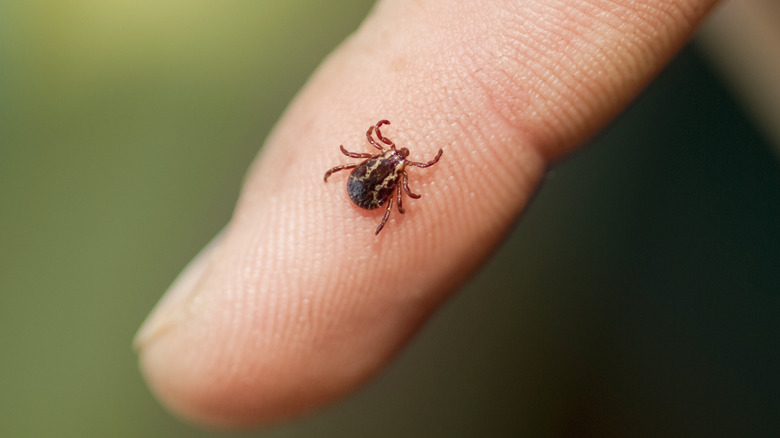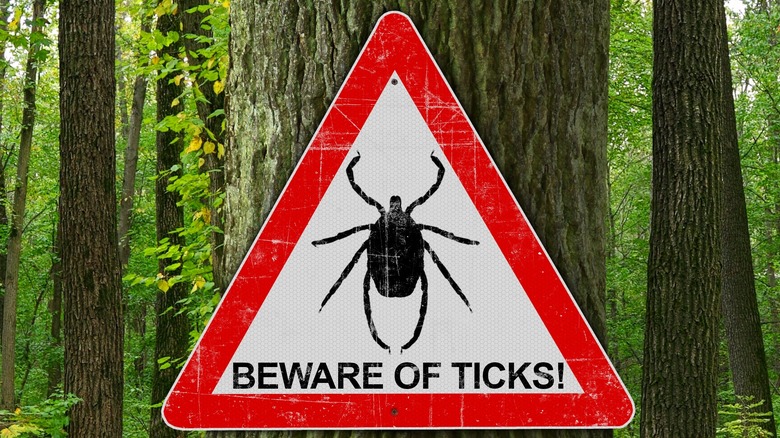The Simplest DIY Tubes To Protect Your Yard Against Ticks
Ticks are a widespread nuisance. Every state in the United States has some variety of tick, with states being home to a multitude of tick species. The same goes for Canada, where all but the extreme northern reaches have at least a moderate population of ticks. Most states in Mexico also have a tick presence, as do parts of every continent around the globe. The concern with this widely distributed pest is not only do they inflict an irritating bite, but ticks can spread many dangerous diseases. In fact, the number of incidents involving diseases spread by ticks has been rising in recent years.
Most people who travel and spend time in the outdoors are pretty aware of the dangers posed by ticks and are aware of what happens to your body when you are bitten by a tick. So, they tend to take precautions such as spraying themselves with tick repellent and carrying a tick key when camping or adventuring. However, there are also steps you should take to protect yourself while at home, as your backyard is just as prone to hosting ticks as is your campsite. Placing tick tubes throughout your yard is one way to make sure you and your family remain tick-free while enjoying time outside.
What is a tick tube and how can it help keep you safe from ticks?
While most people are familiar with tick sprays and even some plants that repel ticks, tick tubes are perhaps less commonly known. Tick control tubes, as they are more officially known, are devices intended to eliminate or control ticks, as the name would suggest. How do they do that? Well, that's a bit more complicated. By design, tick tubes are quite simple – a paper tube filled with insecticide to kill ticks. What makes it a bit more complex is the fact tick tubes don't attract ticks, they attract mice. The idea is to kill the ticks living on the mice.
The chemical used in tick control tubes is permethrin, a chemical commonly used to control mosquitoes, ticks, fleas, and other biting insects. Permethrin is often sprayed. However, proponents of tick tubes say spraying alone will not solve a tick problem, as mice, which commonly host juvenile ticks, are not directly exposed to the spray. Another argument for tick tubes is they only affect the insects which enter the tubes, whereas spraying permethrin will indiscriminately kill even beneficial insects, such as bees.
How to make your own tick tubes
As you may have guessed, tick control tubes are commercially manufactured and sold through a variety of retailers. They can also be ordered online. But, the commercially available version can be a bit on the expensive side. However, you can easily make your own tick control tubes for a fraction of that cost with a bit of permethrin liquid and a couple other common household items.
What you need:
- Small bottle Permethrin spray or liquid.
- Cotton balls.
- Paper tubes (empty toilet paper or paper towel tubes).
- Latex or rubber gloves (to wear while making the tubes).
- Open air or well-ventilated workspace.
How to make tick control tubes:
- Soak the cotton balls in Permethrin and allow them to dry.
- Stuff dried cotton balls into center of the paper tubes.
- Leave both ends of the tube open so mice can enter.
How to use tick control tubes:
- Place tubes in areas where mice are likely to be found.
- Be sure both ends are unobstructed.
- Replace the paper tubes every few months, as they disintegrate.
As an alternative to using paper tubes, you can also use small sections of PVC pipe, which do not disintegrate and can be refilled over and over.


